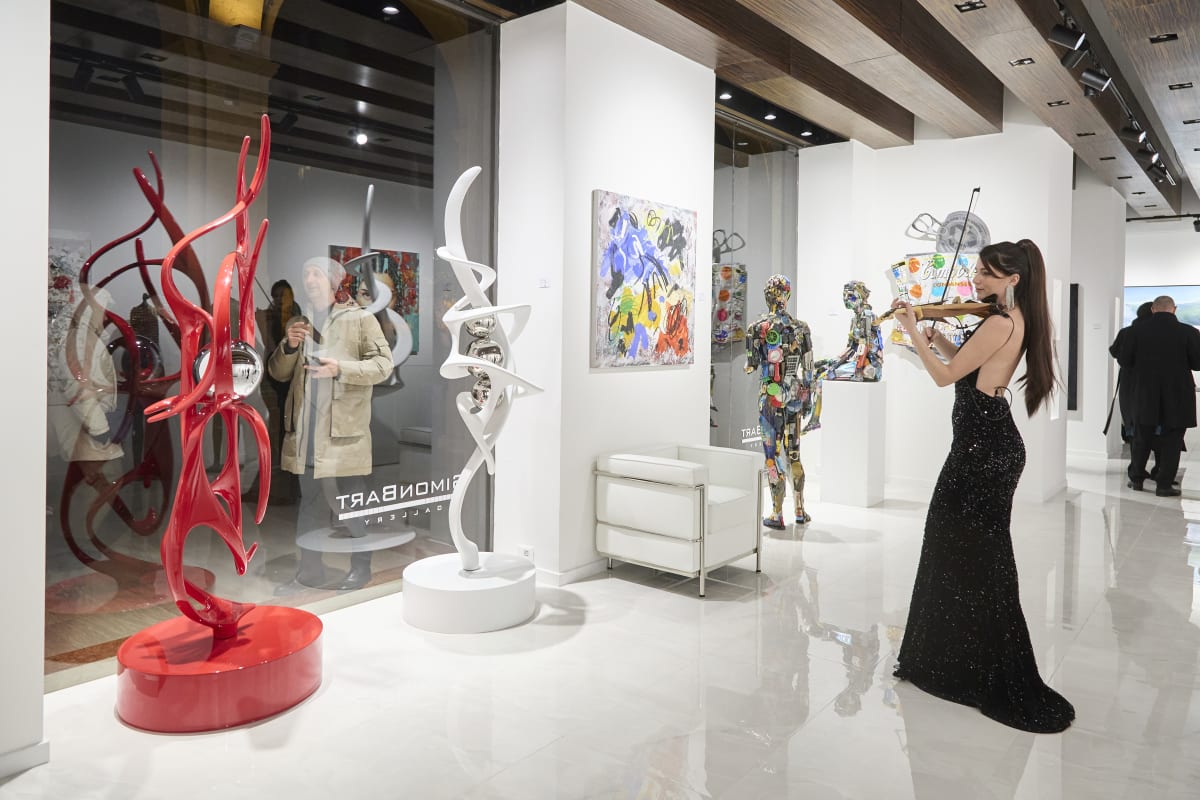Manzur Kargar Afghanistan-Germany, b. 1965
Works
-
 Manzur KargarGolden PillsOil on canvas90 x 70 cm
Manzur KargarGolden PillsOil on canvas90 x 70 cm -
 Manzur KargarKnifeOil on canvas40 x 40 cm
Manzur KargarKnifeOil on canvas40 x 40 cm -
 Manzur KargarGod is great 7Oil on canvas200 x 150 cm
Manzur KargarGod is great 7Oil on canvas200 x 150 cm -
 Manzur KargarButterflies 4Oil on canvas100 x 150 cm
Manzur KargarButterflies 4Oil on canvas100 x 150 cm -
 Manzur KargarFace Splash 4Oil on canvas60 x 60 cm
Manzur KargarFace Splash 4Oil on canvas60 x 60 cm -
 Manzur KargarFace Splash 3Oil on canvas60 x 60 cm
Manzur KargarFace Splash 3Oil on canvas60 x 60 cm -
 Manzur KargarFace Splash 2Oil on canvas60 x 60 cm
Manzur KargarFace Splash 2Oil on canvas60 x 60 cm -
 Manzur KargarFace Splash 1Oil on canvas60 x 60 cm
Manzur KargarFace Splash 1Oil on canvas60 x 60 cm -
 Manzur KargarDripping 4Oil on canvas100 x 80 cm
Manzur KargarDripping 4Oil on canvas100 x 80 cm -
 Manzur KargarDripping 3Oil on canvas100 x 100 cm
Manzur KargarDripping 3Oil on canvas100 x 100 cm -
 Manzur KargarDripping 2Oil on canvas100 x 100 cm
Manzur KargarDripping 2Oil on canvas100 x 100 cm
Biography
Manzur Kargar was born in Kabul, Afghanistan. At the age of 5 his family moved to Germany . He studied painting at the University of Fine Arts (HBK) Braunschweig and at the University of Fine Arts (udk) Berlin. He has lived and worked in Berlin since 1992, with periodical stays in Los Angeles and New York. In addition to being a painter, he is also a musician and composer, currently playing in the band ARTISTS ON HORSES.
In his early works, Kargar focused primarily on early classical art, looking all the way back Hellenistic Greece. But in the last decade, he has focused on reproducing mass media images of contemporary advertising through painting. His inspiration comes from glossy magazines, television and the Internet. The artistic exploration of “advanced” civilizations is central to his work. No matter which era inspires Kargar, he depicts the human figure as shaped by its time.
Kargar now interprets the world as it is currently presented in the media: sugarcoated, unreal, dramatic, seductive, frightening, bizarre and glamorous. He uses motifs with which we are all familiar, pulls them out of their contexts and puts them into new ones. This creates a sensation of irritation. The viewer cannot resist the attraction of his hyper-realistic work, painted with elaborate traditional techniques in numerous layers.
In his latest work Kargar goes back to the origins of painting, the oldest surviving cultural achievement of humankind. Painting has always played a role in the spatial context of existence. From early cave paintings, to the "The Last Supper" by Leonardo da Vinci or the Sistine Chapel by Michelangelo, pictures were created in relation to space. Kargar does not reject the Romantic idea that a painting can stand alone, nor the modern White Cube concept of presenting works detached from realistic surroundings. But he wants to bring painting back in touch with the room.
His most recent paintings are not randomly placed screens, but part of an overall spatial staging. Both levels are treated equally and work in relation to each other. He moves beyond the canvas and incorporates the walls and floor into the artwork. Shapes, colors and elements from the paintings continue onto the wall design, which is created according to the dimensions of the exhibition space. The wall is no longer a neutral background for the painting; it is an extension of the artwork and transfers the oil paintings into a third dimension.
With the combination of digital and classic art, Kargar’s paintings mark the span of painting from the originated emotional base into the inevitable digital age.
Manzur Kargar’s works are featured in numerous private and public collections in Europe and in the USA.
Exhibitions
Events















